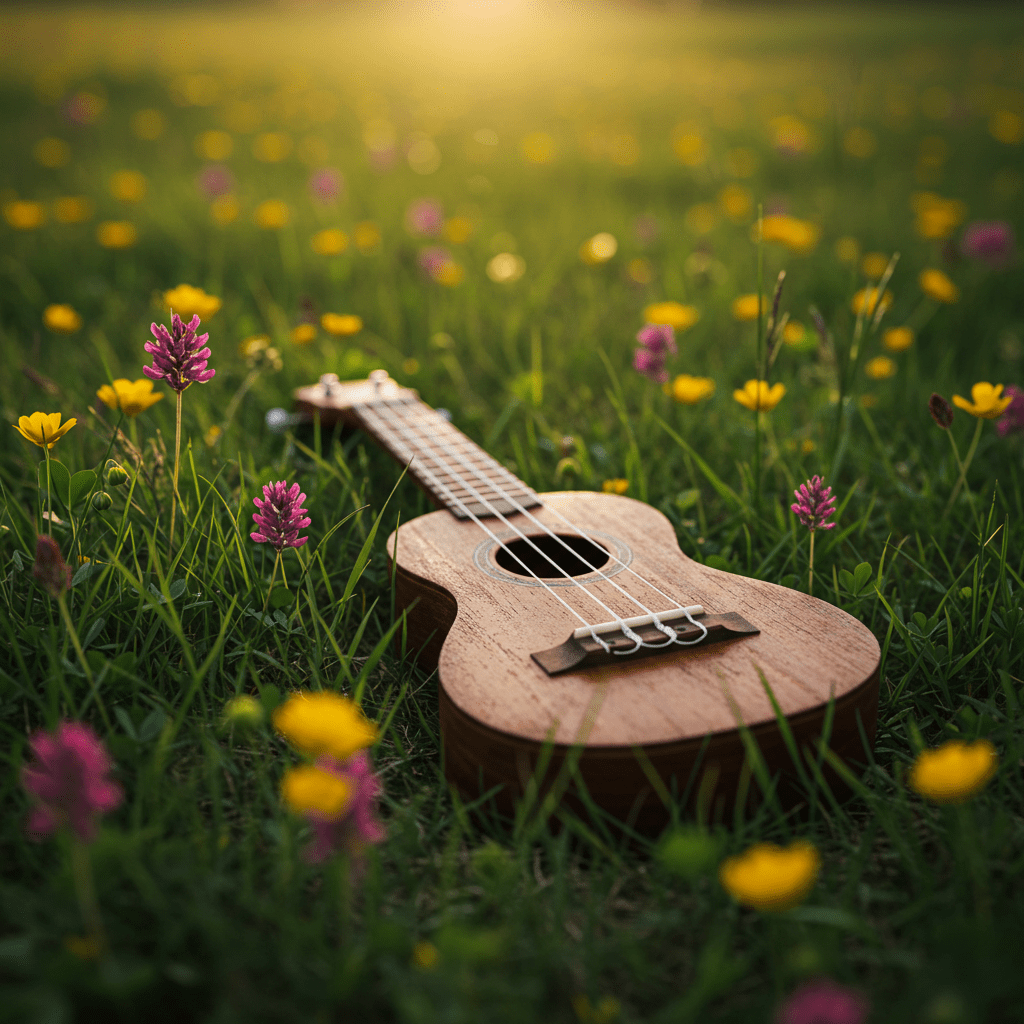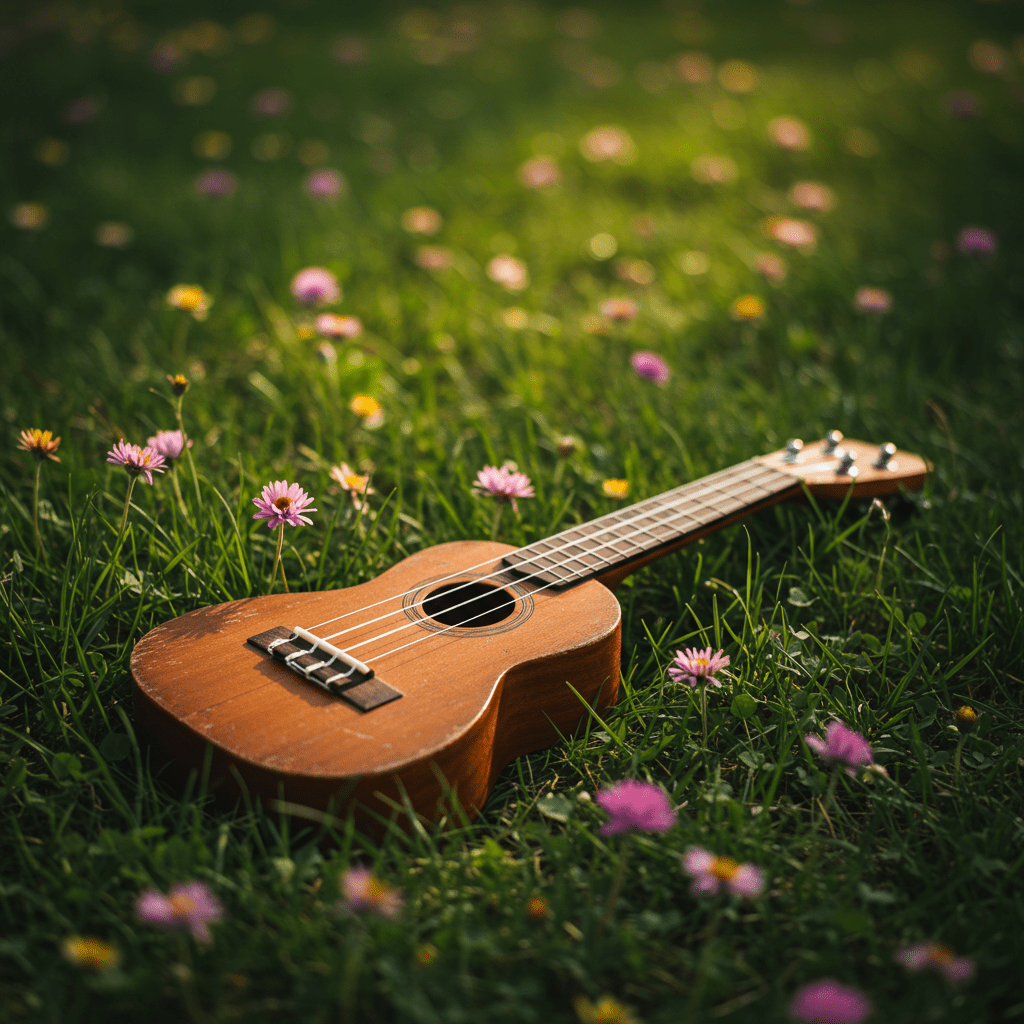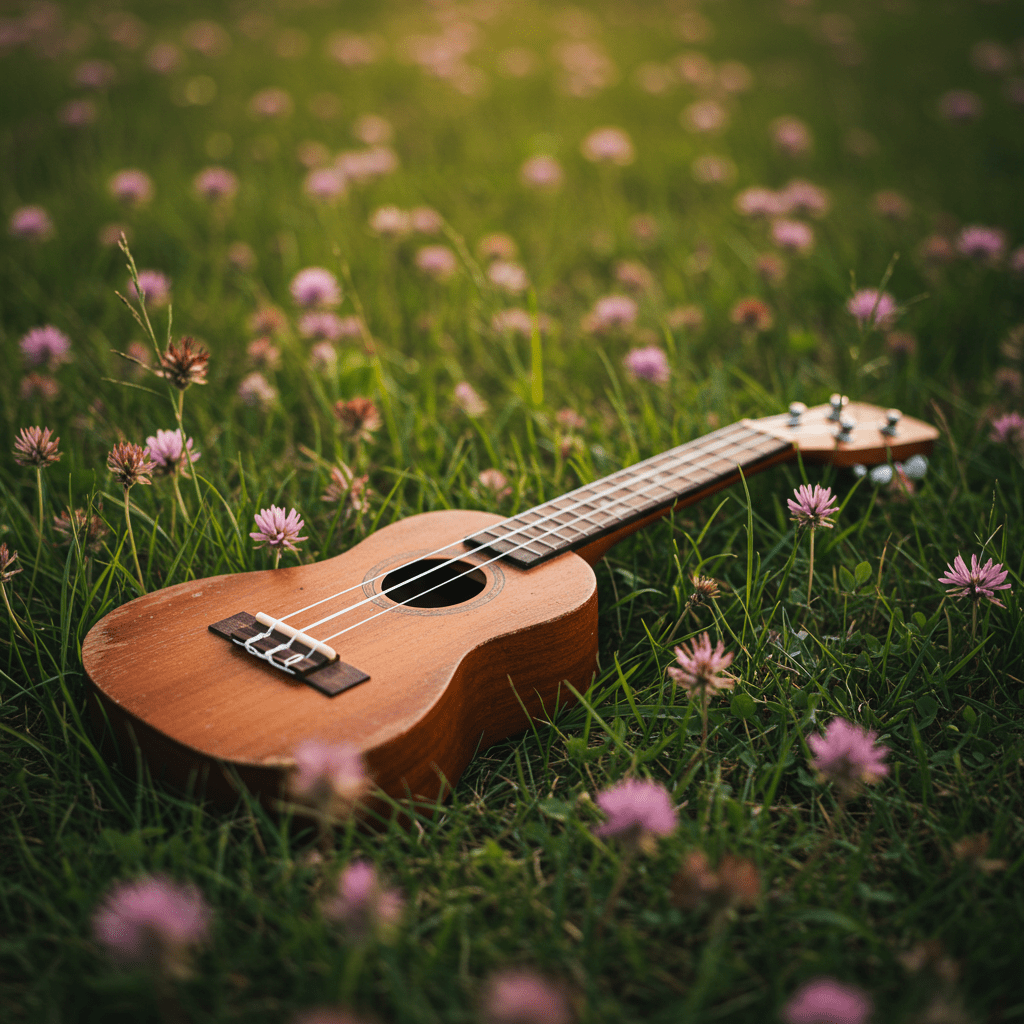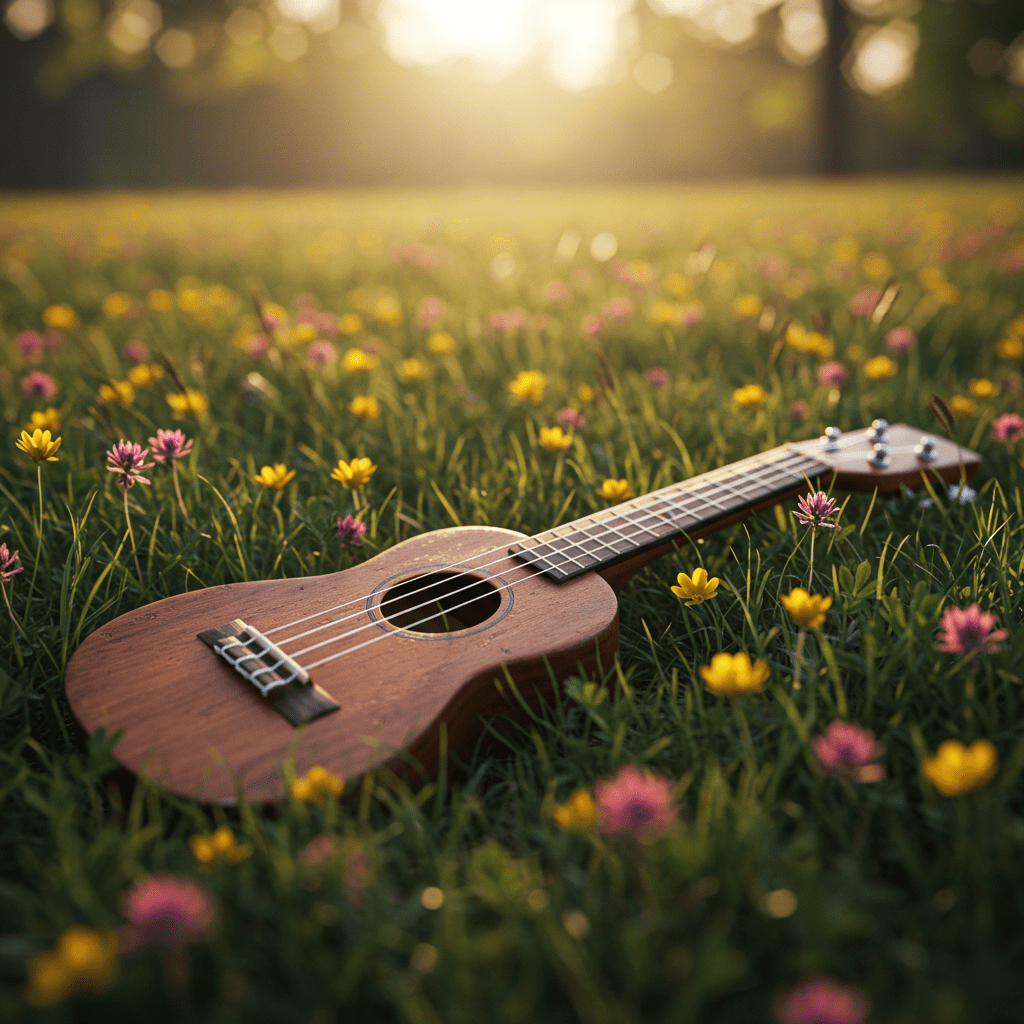Table of Contents
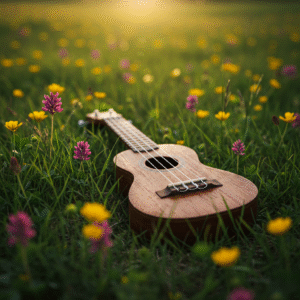
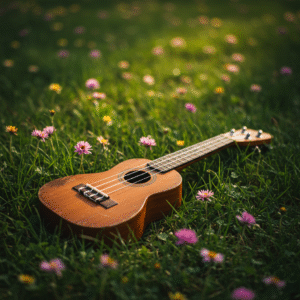
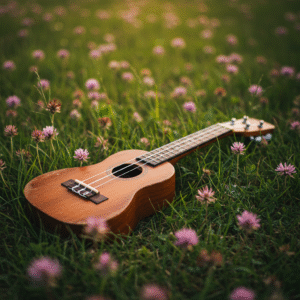
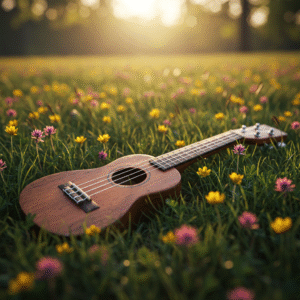
Have you ever been captivated by the sweet, lilting melodies emanating from a ukulele? This seemingly simple instrument, often associated with Hawaiian beaches and carefree strumming, boasts a rich and surprisingly complex history that extends far beyond the shores of the Aloha State. This article delves into the fascinating origins and evolution of the ukulele, tracing its lineage from the Portuguese braguinha to its modern-day global popularity.
We’ll embark on a journey through the 19th century, exploring the crucial role of Madeiran immigrants in introducing this diminutive instrument to Hawaii. We’ll examine the contributions of master luthiers like Manuel Nunes, Augusto Dias, and José do Espírito Santo, whose craftsmanship cemented the ukulele’s place in Hawaiian culture.
Furthermore, we’ll analyze the instrument’s subsequent rise to prominence in the United States during the early 20th century, fueled by vaudeville performances and popular recordings. Finally, we’ll consider the ukulele’s modern resurgence, examining its diverse applications across genres and its continued evolution in design and construction. Prepare to uncover the surprising and captivating story behind this iconic instrument, a story that resonates with cultural exchange, innovation, and the enduring power of music.
The Enduring Charm of the Ukulele: A Historical Journey
The ukulele, a small, four-stringed instrument with a bright, cheerful sound, holds a unique place in musical history. Often associated with Hawaiian culture, its origins are surprisingly rooted in European craftsmanship and immigration. This article delves into the fascinating history of the ukulele, tracing its evolution from its humble beginnings to its current global popularity. We’ll explore its key milestones, influential figures, and the cultural contexts that shaped its enduring charm.
The Portuguese Roots: The Birth of the Ukulele
The story of the ukulele begins in the late 19th century, specifically in 1879, when Portuguese immigrants arrived in Honolulu, Hawaii, aboard the SS Ravenscrag. These immigrants, primarily laborers seeking work on the sugar plantations, brought with them their musical instruments, including the braguinha, machete, and rajão. These instruments, small, guitar-like in construction, were precursors to what we now know as the ukulele.
- The Braguinha and Machete: These were the most direct ancestors of the ukulele. The braguinha, originating from Braga, Portugal, was a small, four-stringed instrument tuned D-G-B-D. The machete, slightly larger, shared similar tuning.
- The Rajão: This instrument, hailing from Madeira, Portugal, was larger and typically had five strings in various double-course configurations. While not a direct ancestor, it contributed to the overall musical landscape from which the ukulele emerged.
The exact individual who first crafted the ukulele in Hawaii remains a subject of debate, but three skilled cabinet makers are most often credited: Manuel Nunes, José do Espírito Santo, and Augusto Dias. These craftsmen, recognizing the potential of these instruments in the vibrant Hawaiian culture, began adapting and refining them.
- Manuel Nunes: Nunes is often considered the most influential of the three. His ukuleles were known for their quality craftsmanship and distinctive sound. He established a successful workshop and played a significant role in popularizing the instrument.
- José do Espírito Santo: Santo was another skilled craftsman who contributed to the early development of the ukulele. His instruments were also highly regarded for their tone and playability.
- Augusto Dias: Dias, like Nunes and Santo, was a talented luthier who helped shape the ukulele into its modern form.
These luthiers, drawing upon their Portuguese woodworking skills and adapting to the available Hawaiian koa wood, created instruments that were lighter, more resonant, and easier to play than their European counterparts. They also experimented with different tunings, eventually settling on the now-standard G-C-E-A (soprano) tuning.
The Hawaiian Embrace: From Labor Camps to Royal Courts
The ukulele quickly captured the hearts of the Hawaiian people. Its portability, affordability, and cheerful sound made it an ideal instrument for both personal enjoyment and communal gatherings. The instrument’s popularity spread rapidly from the sugar plantations to the royal courts.
- The “Jumping Flea”: The name “ukulele” itself is believed to have originated from the Hawaiian phrase “uku lele,” meaning “jumping flea.” This likely referred to the rapid finger movements required to play the instrument, or perhaps to the small size of the instrument itself.
- Royal Patronage: King David Kalākaua, the last reigning king of Hawaii, was a passionate supporter of the arts and a skilled musician himself. He embraced the ukulele, incorporating it into royal performances and celebrations. This royal endorsement significantly elevated the instrument’s status and contributed to its widespread adoption throughout the islands.
The ukulele became deeply intertwined with Hawaiian identity and culture. It was used to accompany traditional hula dances, to serenade loved ones, and to express the joy and spirit of the Hawaiian people. It became a symbol of the islands, representing its laid-back lifestyle and vibrant musical heritage.
The 20th Century Boom: Ukulele Mania Sweeps the Globe
The ukulele’s popularity extended beyond Hawaii in the early 20th century, fueled by a combination of factors, including the Panama-Pacific International Exposition in 1915 and the rise of popular music.
- The Panama-Pacific International Exposition (1915): This world’s fair, held in San Francisco, showcased Hawaiian culture to a global audience. The Royal Hawaiian Band, featuring ukulele players, captivated visitors with their performances, sparking a “ukulele craze” across the United States.
- Vaudeville and Tin Pan Alley: The ukulele found its way into vaudeville acts and popular songs of the era. Performers like Cliff Edwards, known as “Ukulele Ike,” brought the instrument to a wider audience through recordings and radio broadcasts.
- Mass Production and Affordability: Companies like Harmony and Regal began mass-producing ukuleles, making them more affordable and accessible to the general public. This further fueled the instrument’s popularity, particularly among amateur musicians.
The ukulele’s popularity peaked in the 1920s and 1930s, with ukulele orchestras and ensembles springing up across the country. However, its popularity waned somewhat in the post-World War II era, overshadowed by the rise of rock and roll and other musical genres.
The Modern Renaissance: A New Generation Embraces the Ukulele
Despite a period of relative obscurity, the ukulele experienced a remarkable resurgence in the late 20th and early 21st centuries. This revival can be attributed to several factors:
- Israel Kamakawiwoʻole’s Influence: Israel Kamakawiwoʻole, also known as “IZ,” was a Hawaiian musician whose rendition of “Over the Rainbow/What a Wonderful World” on the ukulele became a global phenomenon. His music introduced a new generation to the beauty and versatility of the instrument.
- Jake Shimabukuro’s Virtuosity: Jake Shimabukuro, a virtuoso ukulele player, demonstrated the instrument’s potential beyond traditional Hawaiian music. His innovative techniques and genre-bending performances captivated audiences and inspired countless aspiring ukulele players.
- Accessibility and Affordability: The ukulele remains a relatively inexpensive and easy-to-learn instrument, making it appealing to beginners of all ages. The availability of online tutorials and resources has further contributed to its accessibility.
- Educational Initiatives: Many schools and community organizations have incorporated ukulele instruction into their music programs, introducing the instrument to young people and fostering a new generation of ukulele enthusiasts.
Today, the ukulele is more popular than ever. It is used in a wide range of musical genres, from pop and rock to jazz and classical. Ukulele festivals and workshops are held around the world, attracting players of all skill levels.
- Statistics: According to a 2022 report by the National Association of Music Merchants (NAMM), ukulele sales have increased by over 30% in the past five years. This indicates a strong and growing interest in the instrument.
- Examples: Artists like Eddie Vedder, Amanda Palmer, and Vance Joy have incorporated the ukulele into their music, further expanding its reach and appeal.
Personal Experience: I remember picking up a ukulele for the first time at a local music store. Intrigued by its small size and cheerful sound, I decided to give it a try. Within a few weeks, I was strumming basic chords and playing simple songs. The ukulele’s accessibility and portability made it easy to practice and play anywhere, from my living room to the beach. It quickly became a source of joy and relaxation, and I continue to enjoy playing it to this day.
Looking Ahead: The Future of the Ukulele
The ukulele’s future looks bright. Its versatility, affordability, and accessibility ensure its continued popularity among musicians of all ages and skill levels. As new technologies and musical styles emerge, the ukulele is likely to evolve and adapt, finding new ways to express creativity and connect with audiences.
- Technological Innovations: The development of electric ukuleles and ukulele effects pedals has expanded the instrument’s sonic possibilities, allowing players to experiment with new sounds and textures.
- Global Fusion: The ukulele is increasingly being incorporated into music from diverse cultures around the world, creating exciting new fusions of sound and style.
The ukulele’s journey from Portuguese labor camps to global stages is a testament to its enduring appeal. It is an instrument that embodies the spirit of aloha, bringing joy, harmony, and a touch of Hawaiian sunshine to the world. As long as there are people who seek to express themselves through music, the ukulele will continue to strum its way into our hearts.
In conclusion, the ukulele’s journey from its humble beginnings as a modified machete in 19th-century Madeira to its current status as a globally recognized and beloved instrument is a testament to its adaptability and inherent charm. We’ve traced its evolution through the Hawaiian monarchy, its explosive popularity during the Panama-Pacific International Exposition, and its subsequent adoption into American popular culture, solidifying its place in the musical landscape. We’ve also acknowledged the contributions of key figures, from the Portuguese immigrants who first brought the braguinha to Hawaiian shores to the modern luthiers who continue to innovate and refine its design.
Understanding this rich history provides a crucial context for appreciating the ukulele’s enduring appeal. It’s more than just a simple instrument; it’s a cultural artifact, a symbol of Hawaiian heritage, and a vehicle for musical expression that transcends borders. As players, educators, and enthusiasts, we have a responsibility to preserve and promote this legacy. Let us continue to explore its diverse repertoire, support independent ukulele builders, and actively engage in educational initiatives that ensure the instrument’s vibrant future. Let the spirit of ‘ukulele continue to resonate, fostering joy and connection through the power of music for generations to come.
Frequently Asked Questions
What are the ukulele’s origins?
The ukulele, a small, four-stringed instrument, traces its roots back to the braguinha and machete de braga, small, guitar-like instruments brought to Hawaii by Portuguese immigrants in 1879. These instruments arrived aboard the SS Ravenscrag, and their immediate popularity led to rapid adaptation and evolution by local Hawaiian artisans.
Who were the key figures in the ukulele’s development?
Manuel Nunes, João Fernandes, and Augusto Dias are widely credited as the primary luthiers who adapted the Portuguese instruments, creating what we recognize today as the ukulele. Their craftsmanship and innovative designs solidified the ukulele’s place in Hawaiian culture. King David Kalākaua was also a significant figure, championing the instrument and incorporating it into royal performances.
How did the ukulele gain international recognition?
The ukulele’s popularity spread beyond Hawaii through various avenues, including performances at international expositions, such as the Panama-Pacific International Exposition in 1915. Hawaiian musicians touring the mainland United States and Europe further popularized the instrument, leading to its adoption in popular music and vaudeville acts.
What are the different types of ukuleles?
The four most common ukulele sizes are soprano, concert, tenor, and baritone. Soprano is the smallest and most traditional, while baritone is the largest and tuned similarly to the lower four strings of a guitar. Each size offers a distinct tonal quality and playing experience.
What is the significance of Koa wood in ukulele construction?
Koa wood, native to Hawaii, is highly prized for its tonal qualities and aesthetic beauty. Ukuleles crafted from Koa are often considered superior due to the wood’s resonant properties, producing a warm, balanced sound. However, due to its scarcity and cost, other woods like mahogany and spruce are also commonly used.

